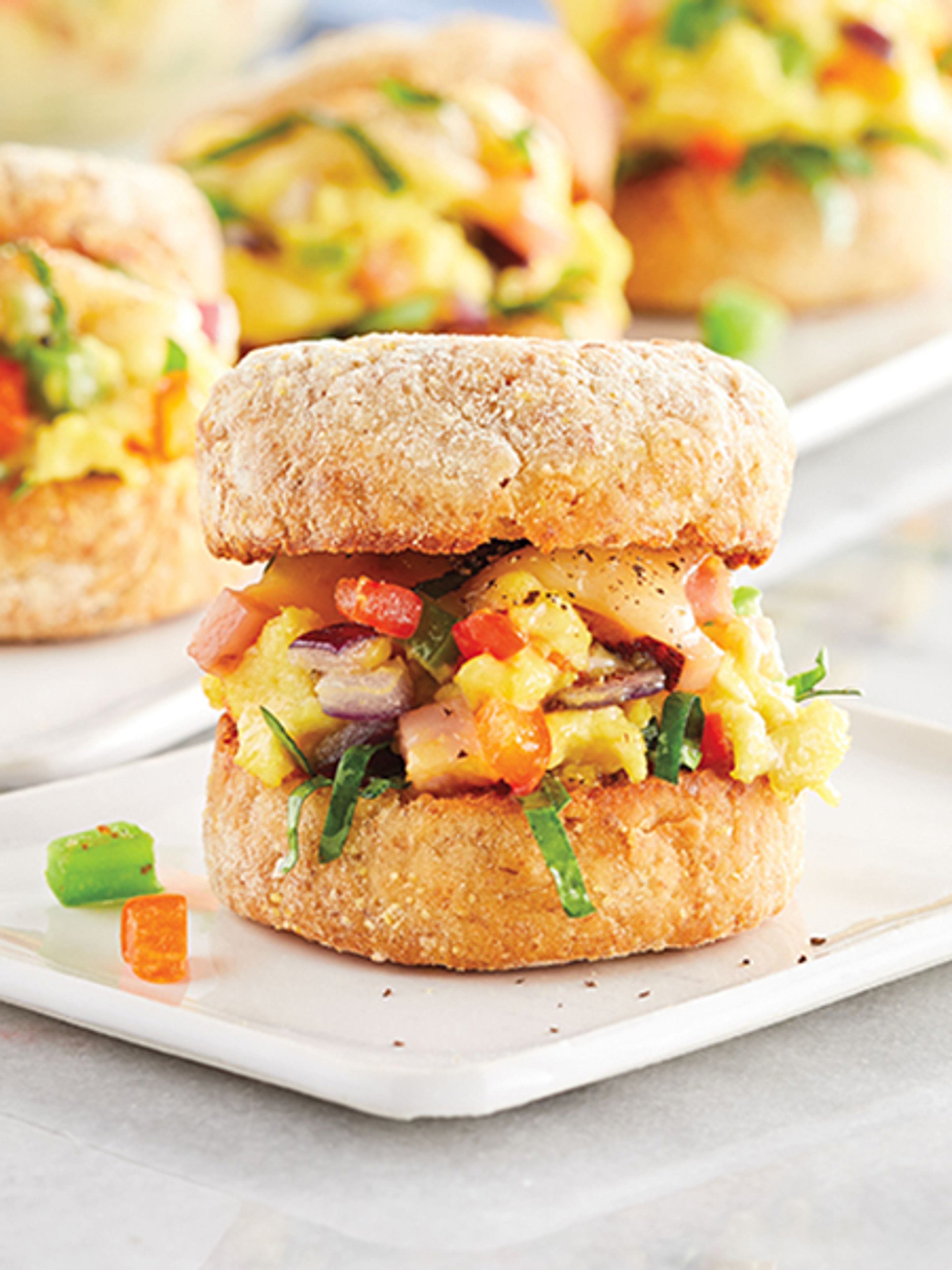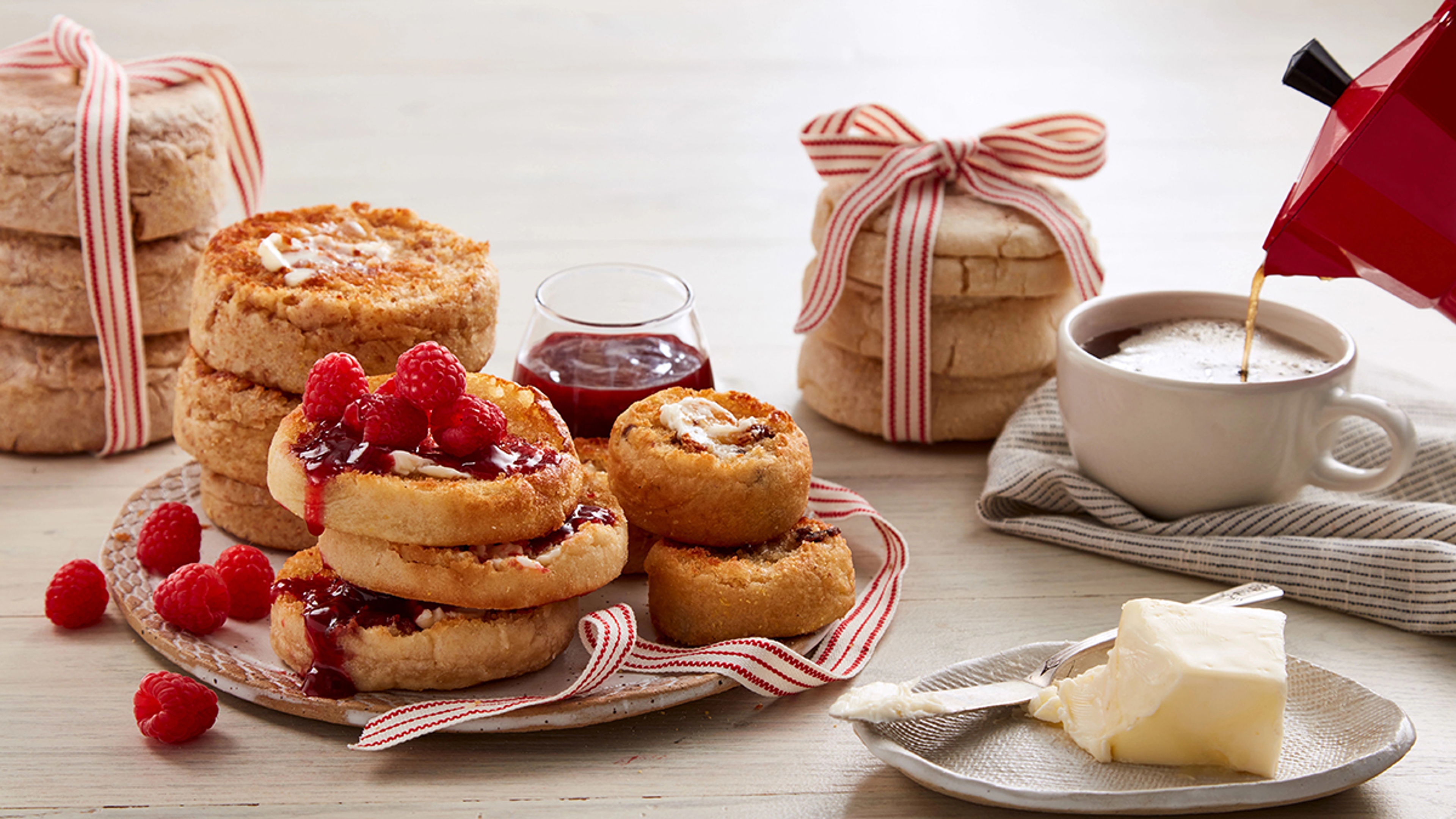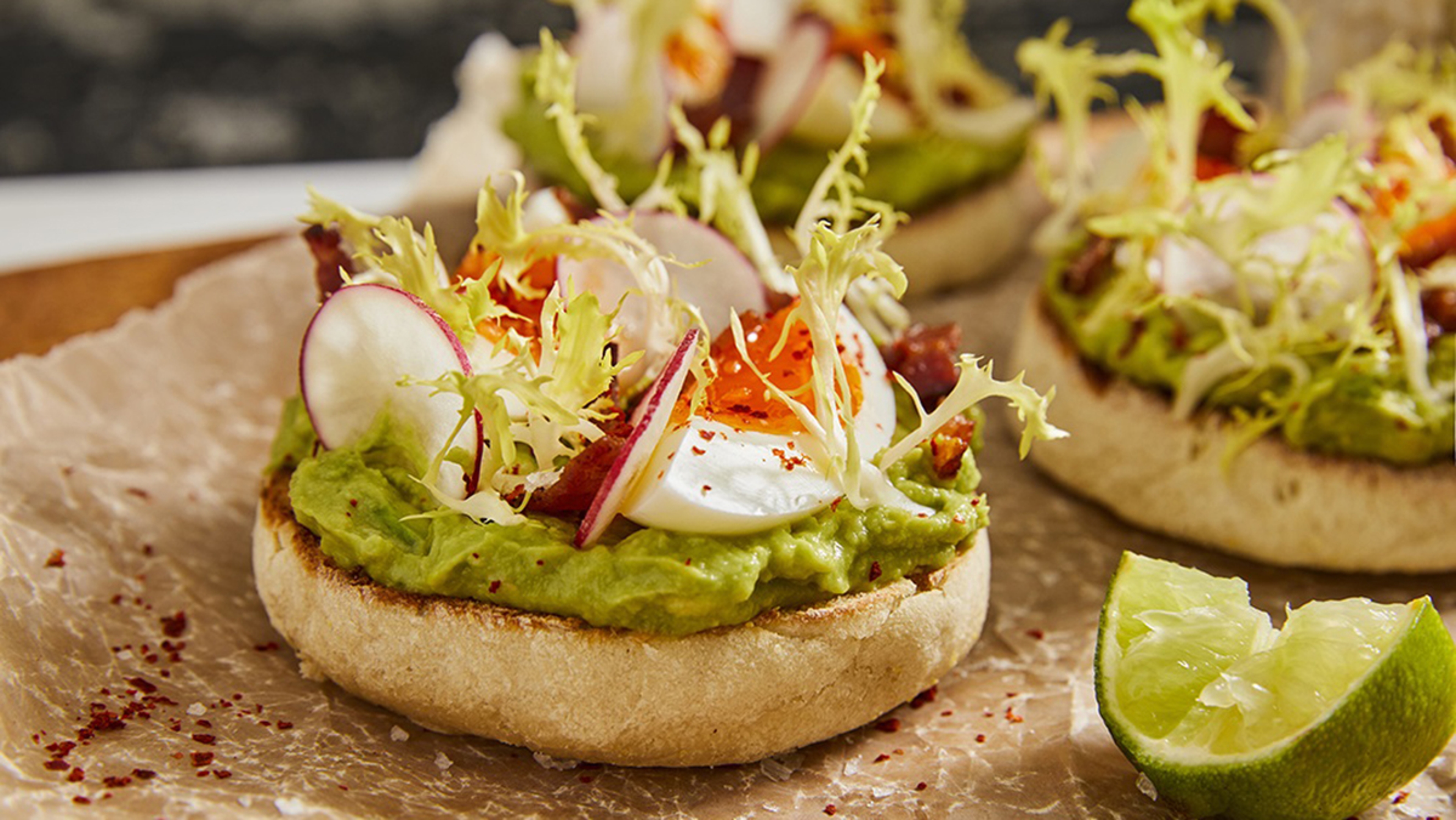The Origin of English Muffins: How English Are They?
The answers lie in the nooks and crannies.
Apr 01, 2025

English muffins are often synonymous with breakfast, center stage, for example, with eggs Benedict or the vessel for any breakfast sandwich. Also known as toasted crumpets, this yeast-leavened bread visibly stands out with its crater-like surface, aka the “nooks and crannies." But what is the origin of English muffins?
While their name suggests that they originate in England, English muffins are not actually English. Mind blown, right? Well, not entirely. The roots of the baked good run all the way back to the 10th century in Wales (still Great Britain, for what it's worth), where they were made from “bara mean," a yeast-leavened baked cake.
That said, the English muffin, as many Americans know it, is the brainchild of British expat Samuel Bath Thomas who, in 1874, emigrated from his homeland of Plymouth, England, to the United States. Thomas found work in a New York City bakery and developed his own version of what he later trademarked as the English muffin. In 1880, he launched his bakery and sold his version of the crumpet — an English griddle cake distinguished by its crater-like holes on the surface — a pre-cut, thinner version known for its signature nooks and crannies. The business expanded to Philadelphia and New England and extended to a range of baked products.
Fast forward to today, and English muffins are considered a breakfast bedrock, particularly in English-speaking countries like the U.S., Australia, and New Zealand.
The irony is that in England, “English muffins" are simply called muffins. And don't get us started on the difference between biscuits and scones...
Wolferman's English muffins
And then there are the Wolferman's English muffins that are distinct in their shape and height. They are shaped like a hockey puck yet softer, of course, and just as thick. Blueberry muffins, for example, add breadth to the dough mixture.
In 1910, Louis Wolferman and his son, already running fine food grocery stores in Kansas City, Missouri, started making English muffins by baking them in tuna cans. (Don't worry, the cans were washed first. Though tuna salad on a toasted English muffin is marvelous!) This gave birth to what is today the Super-Thick, Traditional, and Mini English muffins, which are made with the original 1910 recipe. It's highly guarded, much like the Colonel's secret recipe...
READ MORE: Do You Know the (English) Muffin Man?
A dozen flavors are available, the most popular being original recipe, San Francisco-style sourdough, and Blueberry. During fall and the holidays, Pumpkin Spice and Apple Cinnamon become all the rage.
Time to make the muffins
The Wolferman's English muffins are made with quality wheat flour, almost exclusively from grain farmers in the U.S. The flour, which is high in protein, often gives bread its “chewy" texture.
The baking process begins with using 12% protein unbleached flour, also known as good natural flour. In this case, the muffins are baked with Kansas City Red Wheat, widely grown throughout the Midwest.
The preciseness of temperature (one of the many secrets to the fabled muffin recipe) is critical to the success of all Wolferman's English muffins. They are made as follows: As much as 1,500 pounds of dough is divided and deposited into cups on a flat hot griddle and flipped. The combination of high moisture and heat are musts to attain the desired attributes, which include the porosity ("nooks and crannies") on the inside and a crisp top and bottom on the outside.
The muffins are then deposited on another griddle and baked at high heat, thus maintaining their unique hockey-puck shape, and flipped over onto high heat again. They exit the griddle and are conveyed to a large cooler before packaging. Then, they are forked, sliced, and bagged.
English muffins in general are known for their balance of denseness and porosity, the latter allowing for more space for jam, butter, and other fillings. It's interesting to note that the thicker the muffin and the more additions that are made to it, such as fruit, the less porosity it has. What doesn't change, though, is the texture of the super-thick English muffins.
“The thickness gives you more of the actual bread to enjoy," says Lucy Sommers, merchandising manager for Wolferman's. "It's more of a bread than just a crunchy toast, you have more to bite into, and in an eggs Benedict, it gives you a lot more structure."
.svg?q=70&width=384&auto=webp)














